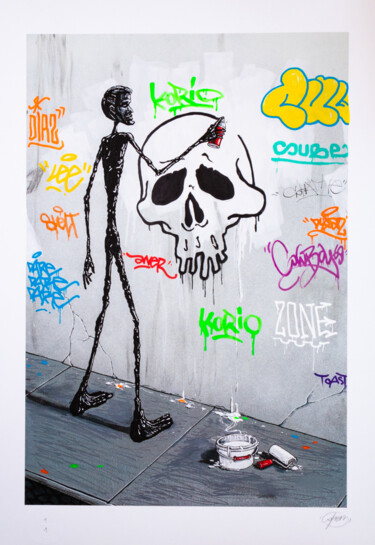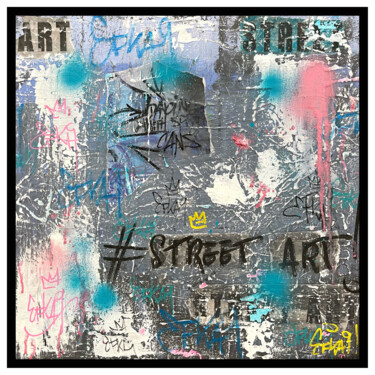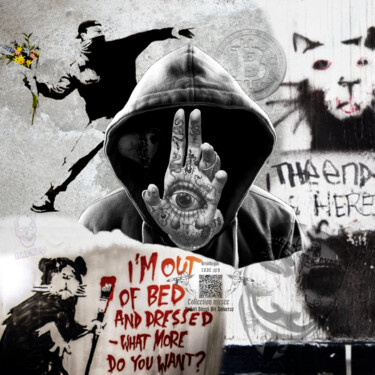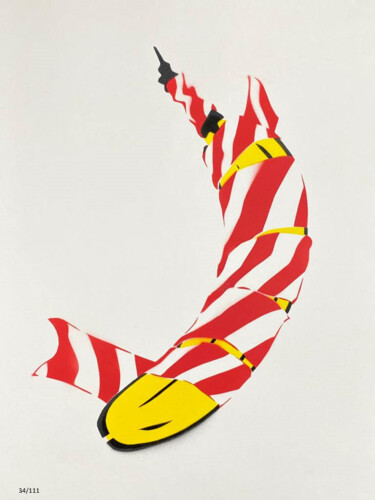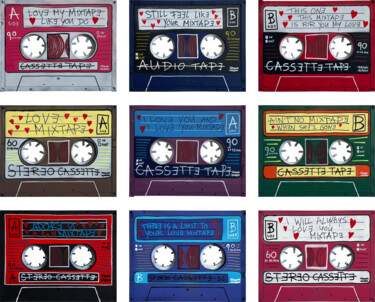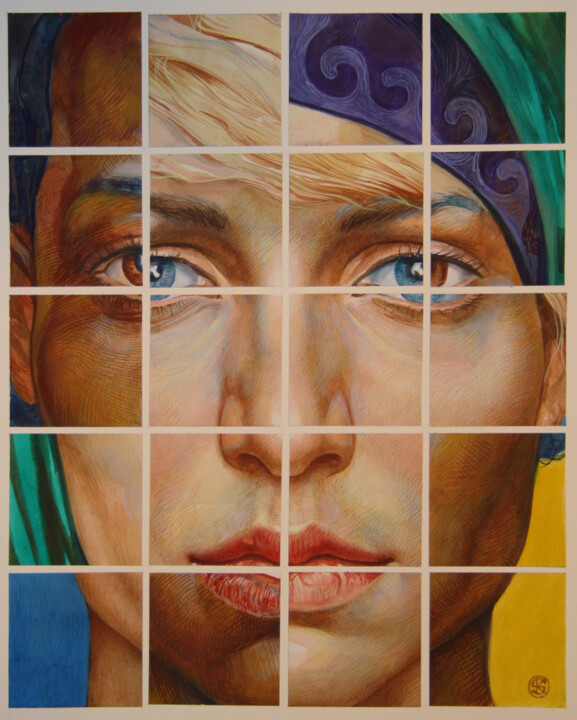 GLOBALIZATION 3 (2015) Painting by Yaroslav Kurbanov
GLOBALIZATION 3 (2015) Painting by Yaroslav Kurbanov
One day, in the pulsing streets of some metropolis — or perhaps everywhere — Street Art appeared, walking boldly with cement-stained shoes. Her gaze was lit with the fire of someone who never asks for permission, and her voice was irreverent, shaped by years spent on walls, among stencils and spray cans, declarations of love and urban rage.
There, sitting on a faded old billboard, was Pop Art — impeccable as ever. A Marilyn that never fades, a soup can turned relic. Elegant, distant, ironic. She had the air of someone who’s seen it all and turned it into art.
The younger one, Street, wasted no time.
"You may be the queen of galleries, but I… I am the voice of the people. I am the true popular art."
Pop Art barely looked up from her flat, flawless colors. No sign of disturbance. Just a poster-perfect smile.
"Darling, without me, you wouldn't even exist. I gave shape to consumption, to desire. I brought mass culture into museum walls."
But Street Art didn’t flinch. She puffed up with pride and began telling her story. How she was born in New York alleyways, with writer tags and midnight raids. How her works aren’t sold — they’re found. How she speaks to everyone, because she’s everywhere — on a school wall, under a bridge, next to an ad.
She spoke of rebellion, of freedom.
"I don’t need frames. Every piece I make is an act. A gesture. A response."
And she invoked Banksy, and Basquiat, and neon lights covered by rats in suits and ties.
Pop Art, listening, gave a slow, deliberate shrug.
"I turned irony into a weapon. I made the product a symbol. Celebrity, an icon. I held a mirror up to the world — and it saw itself in a Coca-Cola can."
She spoke of Andy, of Roy, of Warhol screen-printing Marilyn’s face until she became immortal. She spoke of loud colors and obsessive repetition — like the ads we consume without even noticing.
And as the two traded barbs, time passed. People began to stop around them. Some were drawn to Street’s raw freshness, others to Pop’s timeless allure.
Some even began to see them as kindred — the same love for image, the same rejection of tradition, the same hunger to speak to the world.
But let’s take a step back.
Because while it’s true that Street Art and Pop Art share similarities — both born outside the refined salons, both children of contemporary noise — it’s equally true that they speak very different languages.
Pop Art emerged in the post-war years, when advertising, cinema, and television began to colonize the collective imagination. Pop artists like Warhol, Lichtenstein, and Rosenquist didn’t oppose consumerism — they quoted it, multiplied it, placed it under glass.
Pop Art is cool irony, seriality, glamour, and implicit critique. It’s art dressed as advertising, meant to make us think about advertising. Its power lies in turning the ordinary into the iconic.
Street Art, on the other hand, doesn’t ask for permission.
It’s born in the suburbs, in subway tunnels, on the roll-down shutters of closed shops. It’s the colorful cry of those with no space or invitation, but with much to say.
Political, social, poetic — Street Art is a form of resistance: to silence, conformity, and commodification.
Where Pop Art flirted with capitalism, Street Art challenges it, mocks it, exposes it.
Their tools differ too.
Pop Art works with canvas, screenprints, printing, and design. Street Art uses walls, spray cans, stencils, wheat-paste posters, even soot, moss, and light.
Where Pop Art repeats, Street Art is ephemeral: a piece might disappear the next day, buried under a fresh coat of paint or wiped out by a city ordinance.
 Keep it Unreal, 2023, Mr. Brainwash (2023) Painting by Mr. Brainwash
Keep it Unreal, 2023, Mr. Brainwash (2023) Painting by Mr. Brainwash
 madonna di foligno e della mela morsicata (2025) Painting by Giuliogol
madonna di foligno e della mela morsicata (2025) Painting by Giuliogol
Street Art vs. Pop Art: A Historic-Artistic Duel
And then came the moment of the final showdown. No more words, no slogans—just pure image. Two artworks, face to face, like boxers ready to strike with what they do best: their style.
In the first piece above, Pop Art steps into the spotlight with its sharp irony and taste for provocation. Representing the movement is Mr. Brainwash, who brings to the stage an explosive work filled with visual references, vibrant color, and direct messages.
Immediately after, Street Art makes its entrance—brazen and bold—with the energy of someone who knows how to turn the sacred into an urban cry. Leading the charge is Giuliogol, who fuses the delicacy of Renaissance painting with the raw power of street language.
In his unmistakable visual style, Mr. Brainwash throws into the ring a piece that is at once a manifesto and a parody, satire and celebration. A stylized gorilla wears a sign around its neck that reads “Keep it un-real.” Surrounding it, a jungle of pop references: Campbell’s Soup, Mickey Mouse, Snoopy, spray-painted phrases, slogans of love and rebellion. It’s mass culture, chewed up, reimagined, and served with a splash of sarcasm and a handful of nostalgia.
Street Art responds with solemnity and strength. Giuliogol offers a reinterpretation of Raphael’s Madonna of Foligno, but his oil on canvas is anything but traditional: the Madonna emerges from a background of Bible pages, reimagined with vivid acrylics and sculptural brushstrokes that recall mural techniques. Behind her, like graffiti on a subway car, tags, crowns, and signs of the contemporary world.
It’s a work that speaks of contamination—where sacred art bends to the language of the street.
There’s no winner here, only two visions of the world that reflect one another.
Let’s move on to the next four artworks to explore!
 At the beach / 85 x 70 cm (2025) Painting by Alexandra Djokic
At the beach / 85 x 70 cm (2025) Painting by Alexandra Djokic
 Sous la peau (2025) Painting by Mickael Bereriche (KESMO)
Sous la peau (2025) Painting by Mickael Bereriche (KESMO)
The images you see above mark the second act in the aesthetic battle between Pop Art and Street Art—a duel played out in color, texture, and intention. This time, the ring shifts between beach umbrellas and crumbling urban walls.
On the left, Pop Art reveals itself through the chromatic and graphic lightness of Alexandra Djokic. Her work At the Beach (2025) is a visual symphony of stylized bodies, cut between geometric shadows and striped parasols. A holiday scene that speaks of the everyday, of rest, and of the collective crowd—yet it does so with a silkscreen elegance that nods to Lichtenstein and Hockney. Reality here isn’t distorted; it’s celebrated in its normalcy, softened by the tinted lens of collective memory.
On the other side stands the biting provocation of French street artist Mickael Bereriche (KESMO). In Sous la peau (2025), he invites us to scratch, to dig, to pass through. The piece is a true urban trompe-l'œil: the simulated surface of a brick wall crumbles away, revealing a universe of spray paint, acidic colors, tags, and poetic chaos hidden beneath.
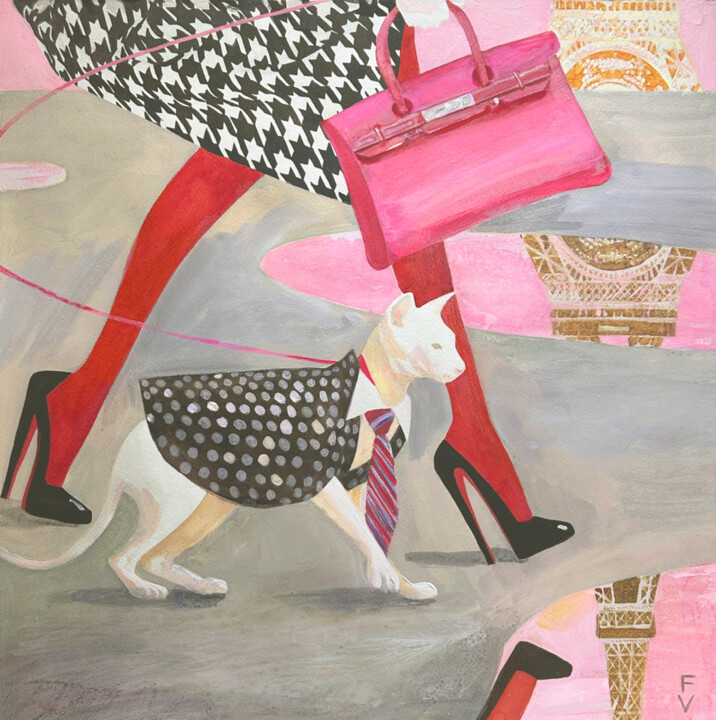 Parisian Sphinx (2019) Painting by Victoria Fomina
Parisian Sphinx (2019) Painting by Victoria Fomina
 GIRL POWER (2024) Painting by Db Waterman
GIRL POWER (2024) Painting by Db Waterman
Here they are—the two works above—marking the epilogue of this visual duel made of forms, colors, and worldviews. The finale is not a triumph, but a bow. Because in this clash between Street Art and Pop Art, there is no defeat—only mutual recognition.
On the left, Parisian Sphinx by Victoria Fomina is the quintessence of elegant, surreal Pop Art. A cat strolls by in a suit and tie next to an equally iconic female figure, while a golden, stylized Eiffel Tower shimmers in the background. It’s fashion, it’s fairy tale, it’s metropolitan myth.
Db Waterman responds with GIRL POWER, a spontaneous and vibrant anthem. A girl, armed with spray cans, scatters layers of flowers over a gray world, peeling back the urban dullness with energy and color. The work is a tactile collage—messy with life, brimming with tender rage and raw vitality. Waterman takes street poetry and makes it universal: the young protagonist becomes anyone who has ever needed to repaint their reality.
And so, Street Art—young, bold, instinctive—lowers its gaze for a moment. Not in surrender, but in tribute. To the Pop Art that came before, that paved the way, that taught us irony is resistance too, and elegance can be dissidence.
The battle is over. Let us go in peace.

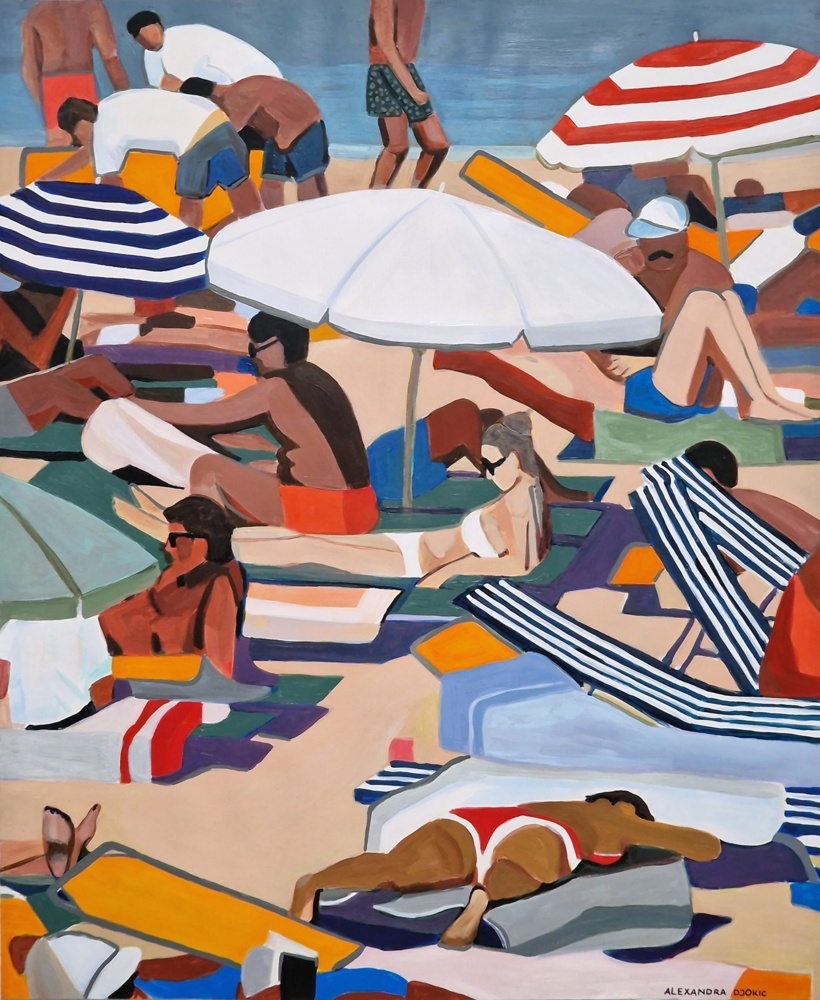
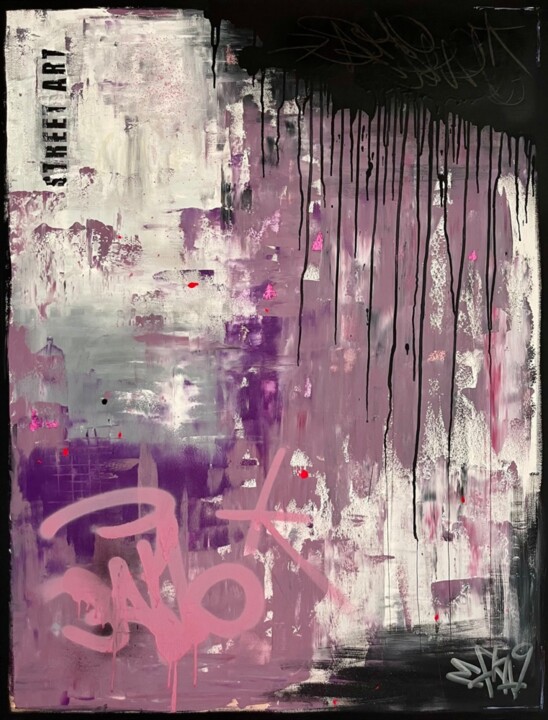
 Olimpia Gaia Martinelli
Olimpia Gaia Martinelli




